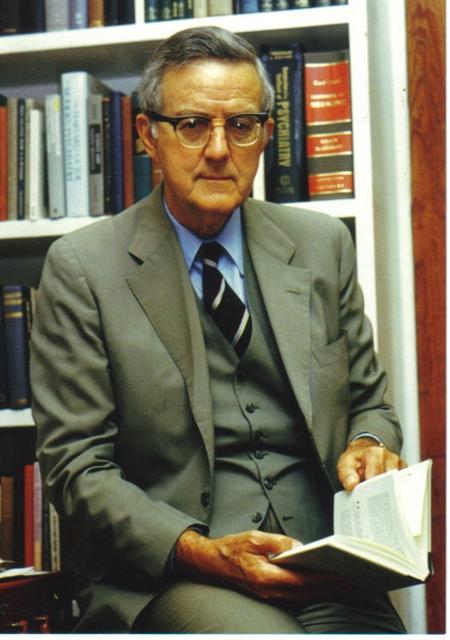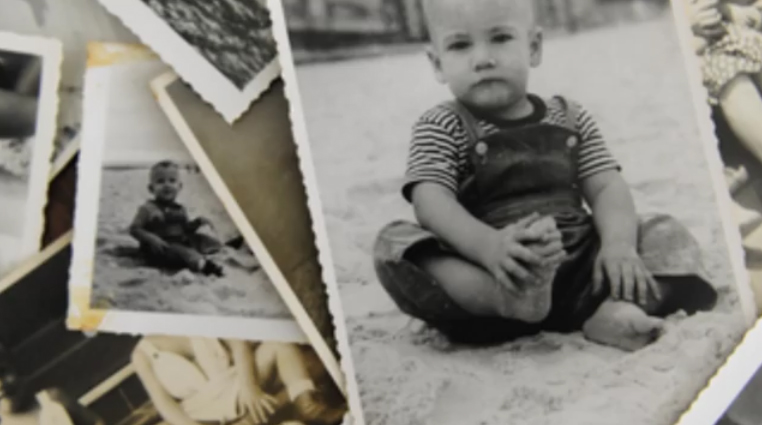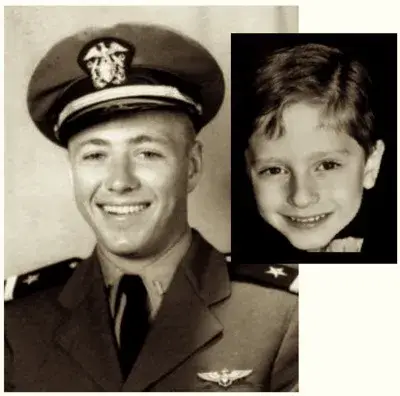Exploring Past Lives: Dr. Ian Stevenson’s Work on Reincarnation, Past Life Regression, and the Science Behind It

The concept of reincarnation—the belief that the soul or consciousness can be reborn into a new body after death—has intrigued humanity for millennia. From ancient religious doctrines to modern-day spiritual practices, reincarnation has continued to captivate imaginations, prompting many to question whether life truly ends at death. But beyond philosophical or religious musings, there has been serious scientific investigation into this phenomenon, led most notably by the work of Dr. Ian Stevenson.
Dr. Ian Stevenson, a psychiatrist by training, spent much of his career at the University of Virginia investigating cases of children who claimed to recall past lives. His meticulous research into these spontaneous past life memories has left an indelible mark on the study of reincarnation. At the same time, the practice of past life regression therapy, which involves using hypnosis to help individuals access supposed memories from previous incarnations, continues to gain attention in both the scientific and therapeutic communities.
This article delves into Dr. Stevenson’s groundbreaking work, explores what may be happening during past life regression, and examines the theories, evidence, and possible scientific explanations behind the phenomenon.
Dr. Ian Stevenson: A Pioneer in Reincarnation Research
Dr. Ian Stevenson (1918–2007) was a Canadian-born psychiatrist whose interest in reincarnation was sparked by reports of children, mostly in Asian and Middle Eastern cultures, who exhibited an astonishing recall of past lives. Dr. Ian Stevenson’s groundbreaking work on reincarnation began in the early 1960s, but his interest was piqued when he encountered a series of cases where children spontaneously recalled past lives. Initially sceptical, Stevenson was struck by the consistency of these claims across different cultures and contexts. These children, often between the ages of two and seven, would describe in vivid detail previous lives they claimed to have lived. In many cases, their memories included the names of people they had known, the locations where they had lived, and even the circumstances surrounding their deaths. These recollections were frequently so specific that Dr. Stevenson was able to verify many of them through careful investigation.
In an interview with journalist Tom Shroder, he expressed his amazement, stating, "these forty-four cases, when you put them together, it just seemed inescapable to me that there must be something there ... . I couldn’t see how they could all be faked or they could all be a deception." This revelation prompted Stevenson to consider reincarnation as a serious hypothesis worth investigating, though he had not yet planned to embark on the extensive fieldwork that would later define his career.
Stevenson’s plans took a decisive turn after publishing a paper in 1960, where he called for further investigation into reincarnation and encouraged people to come forward with additional cases. Shortly after the paper’s release, Eileen Garrett, the head of the Parapsychology Foundation, contacted him about a case in India and offered to fund his investigation. Initially hesitant due to his numerous other responsibilities, Stevenson eventually accepted, and his trip to India in 1961 marked the beginning of his deep dive into reincarnation research. During this trip, Stevenson was astounded by the sheer number of cases—within four weeks, he investigated 25 cases in India and another seven in nearby Ceylon (now Sri Lanka). This prolific discovery demonstrated that children's past-life memories were more widespread than previously assumed, setting the stage for his lifelong research into this phenomenon.
One of the pivotal moments in Stevenson’s career came with the support of Chester Carlson, the inventor of the Xerox photocopying process. Carlson, intrigued by Stevenson’s work and inspired by his wife’s interest in parapsychology, offered financial backing. Although Stevenson initially declined, preferring to focus on his other duties, he eventually accepted funding to purchase equipment like a tape recorder to document his investigations. Carlson’s continued support would prove crucial, enabling Stevenson to expand his research globally. With this backing, Stevenson was able to pursue cases in remote areas, including Alaska, where he investigated past-life claims among the Tlingit tribes, further broadening his research beyond the more commonly studied Eastern cultures.
Stevenson's dedication culminated in his landmark book, Twenty Cases Suggestive of Reincarnation, published in 1966. This meticulously detailed work included thorough case reports that laid out the exact statements made by children, verified by numerous informants, and cross-checked with the lives of deceased individuals. Despite some initial setbacks—including a delay in publication due to concerns over the credibility of an interpreter—Stevenson returned to India to revalidate the cases, which stood up under scrutiny. His work was praised by some as a methodical and objective presentation of compelling evidence, although the broader scientific community largely ignored it. However, his commitment to rigorous documentation and his willingness to confront both the strengths and weaknesses of each case earned him respect among open-minded scholars and laid the foundation for future research into reincarnation, solidifying his role as a pioneer in the field.
Stevenson documented over 2,500 cases of children with spontaneous past life memories. In each case, he applied a rigorous scientific methodology, striving to rule out alternative explanations such as fantasy, fraud, cryptomnesia (the unconscious recall of information previously learned), or suggestion by family members. Stevenson’s research led him to conclude that, while not all cases could be definitively attributed to reincarnation, many of the children's memories could not be explained by any conventional means.
One of Stevenson’s most famous cases involved a boy in Sri Lanka who, from the age of three, began speaking about a previous life in which he had been a shopkeeper in another town. The boy described his past life in remarkable detail, including the name of the shop, the types of goods sold, and the name of his previous family. Stevenson and his team were able to locate the family the boy described, and the details he had provided matched the life of a deceased shopkeeper almost exactly. Moreover, the boy was able to correctly identify members of his previous family, despite never having met them in his current life.
Theories Behind Past Life Memories
While Dr. Stevenson remained cautious in his conclusions, preferring to describe the phenomenon as evidence "suggestive" of reincarnation, he also explored alternative explanations. Several hypotheses have been put forward to explain how past life memories might arise, both in spontaneous cases (like those studied by Stevenson) and in hypnotic past life regression sessions. These theories range from psychological and neurological processes to more paranormal possibilities.
- Fraud or Suggestion
One of the simplest explanations for past life memories is fraud or suggestion. In some cases, it is possible that children or adults may fabricate or exaggerate their past life stories for attention, either consciously or subconsciously. This theory is often difficult to prove or disprove, especially in the case of children, whose imaginations may be particularly vivid.
In the context of past life regression, suggestion may also play a significant role. Hypnosis involves putting individuals into a highly suggestible state, making them more likely to comply with the expectations of the hypnotist. This could lead the person undergoing regression to "create" a past life narrative, influenced by the hypnotist’s questions or by prior knowledge they may have forgotten (a phenomenon known as cryptomnesia).
- Fantasy and Metaphor
Another explanation is that past life memories may be a form of fantasy or metaphor, particularly in hypnotic regression. Under hypnosis, the subconscious mind may weave a story that, while not literally true, serves as a metaphor for current emotional or psychological issues. For example, someone who feels disconnected from their present life might construct a past life narrative that explains their feelings of alienation or longing. These narratives can be similar to the way our minds create dreams, blending personal concerns with symbolic imagery.
In this sense, past life regression could be seen as a form of psychological healing, with the past life narrative acting as a metaphorical framework for processing unresolved trauma or emotional conflicts in the present life.
- Cryptomnesia and Paramnesia
Cryptomnesia, or "hidden memory," refers to the phenomenon of remembering information that one has previously learned but forgotten, and then mistakenly attributing it to a different source, such as a past life. For instance, a person may recall historical details, locations, or names they encountered in books, television shows, or conversations but have no conscious memory of the original source.
Paramnesia, on the other hand, involves misattributing memories to a different time or place. In the context of past life regression, paramnesia might explain why some individuals "remember" lives in historical periods they have no conscious knowledge of—information they encountered in childhood could resurface under hypnosis, with the individual attributing it to a past life experience.
While cryptomnesia and paramnesia are valid psychological phenomena, they don’t fully account for the highly specific details recounted by children in some of Dr. Stevenson’s cases, many of which could be verified through independent investigation.
- Genetic Memory
One intriguing theory explored is the concept of genetic memory—the idea that certain memories or experiences could be encoded in our DNA and passed down through generations. This theory suggests that memories of ancestral experiences might be stored at a genetic level and occasionally manifest as past life memories in descendants.
While genetic memory has been proposed in the context of inherited phobias or survival instincts, there is little scientific evidence to support the notion that detailed personal memories could be transmitted genetically. Moreover, this theory struggles to account for the accuracy of specific memories from lives that are not connected by familial lines, as was the case in many of Stevenson’s investigations.
- ESP and Possession
In his later work, Dr. Stevenson considered the possibility that extra-sensory perception (ESP) might be involved in the recall of past lives. ESP, or the ability to acquire information without the use of the known senses, could potentially explain how individuals—whether spontaneously or under hypnosis—access knowledge of past events or lives they could not have learned about through ordinary means.
Stevenson also briefly entertained the idea of possession as a possible explanation for some cases, particularly those in which children seemed to exhibit personality changes or knowledge far beyond their years. In this scenario, the child may be "possessed" by the spirit of a deceased individual, who imparts their memories or identity to the child. While Stevenson did not endorse this theory as a general explanation for past life memories, he acknowledged that it might apply in rare cases.
Hypnotic Past Life Regression: Accessing the Subconscious or Unlocking Memories?
Past life regression, a therapeutic technique popularised by hypnotherapists, seeks to help individuals recall memories from past incarnations. This process typically involves putting the person into a deep state of hypnosis, where they are encouraged to relax and allow any memories or images from previous lives to surface.
During a past life regression session, clients often describe specific scenes, characters, and experiences from what they believe to be past lives. These can range from mundane activities in ancient times to dramatic events like battles or deaths. Proponents of past life regression therapy argue that recalling these memories can provide insight into present-day issues, such as phobias, relationship problems, or emotional traumas, which may be rooted in past life experiences.
However, sceptics argue that these "memories" are more likely to be the product of imagination, suggestion, or cryptomnesia. The human mind, especially when in a suggestible state like hypnosis, is highly capable of constructing elaborate and seemingly real narratives based on fragments of memory, fantasy, and subconscious desires.
Scientific Evidence and Criticism
The scientific community remains largely sceptical of both spontaneous past life memories and hypnotic past life regression. While Dr. Stevenson’s work is widely respected for its rigour and thoroughness, many scientists argue that the evidence for reincarnation is circumstantial at best and cannot be conclusively proven.
Critics point to the lack of controlled experiments and the difficulty of verifying claims in a scientifically rigorous manner. They also argue that cultural and psychological factors may play a significant role in shaping past life memories. For example, children in cultures that believe in reincarnation are more likely to report past life memories, suggesting that social and cultural conditioning may influence these experiences.
Nevertheless, there are those within the parapsychology community who continue to study past life memories and past life regression with an open mind. Researchers like Dr. Jim Tucker, Stevenson’s successor at the University of Virginia, have continued to investigate cases of spontaneous past life recall in children, seeking to build on Stevenson’s legacy and explore the mysteries of consciousness and the afterlife.
What Is Happening During Past Life Regression?
While the question of whether reincarnation is real remains unanswered, the study of past life memories offers fascinating insights into the nature of memory, consciousness, and the human experience. Whether these memories are the result of genetic inheritance, subconscious fantasy, or paranormal phenomena, they provide a powerful lens through which to explore the mysteries of the mind.
For many, past life regression therapy serves as a valuable tool for personal growth and healing, offering a unique way to confront unresolved issues from the past—whether from this life or another. For others, it remains a fascinating enigma, one that challenges our understanding of life, death, and what may lie beyond.
You can listen to the full podcast episode here: https://www.podpage.com/haunted-history-chronicles/exploring-past-life-regression-with-paul-goddard/






















